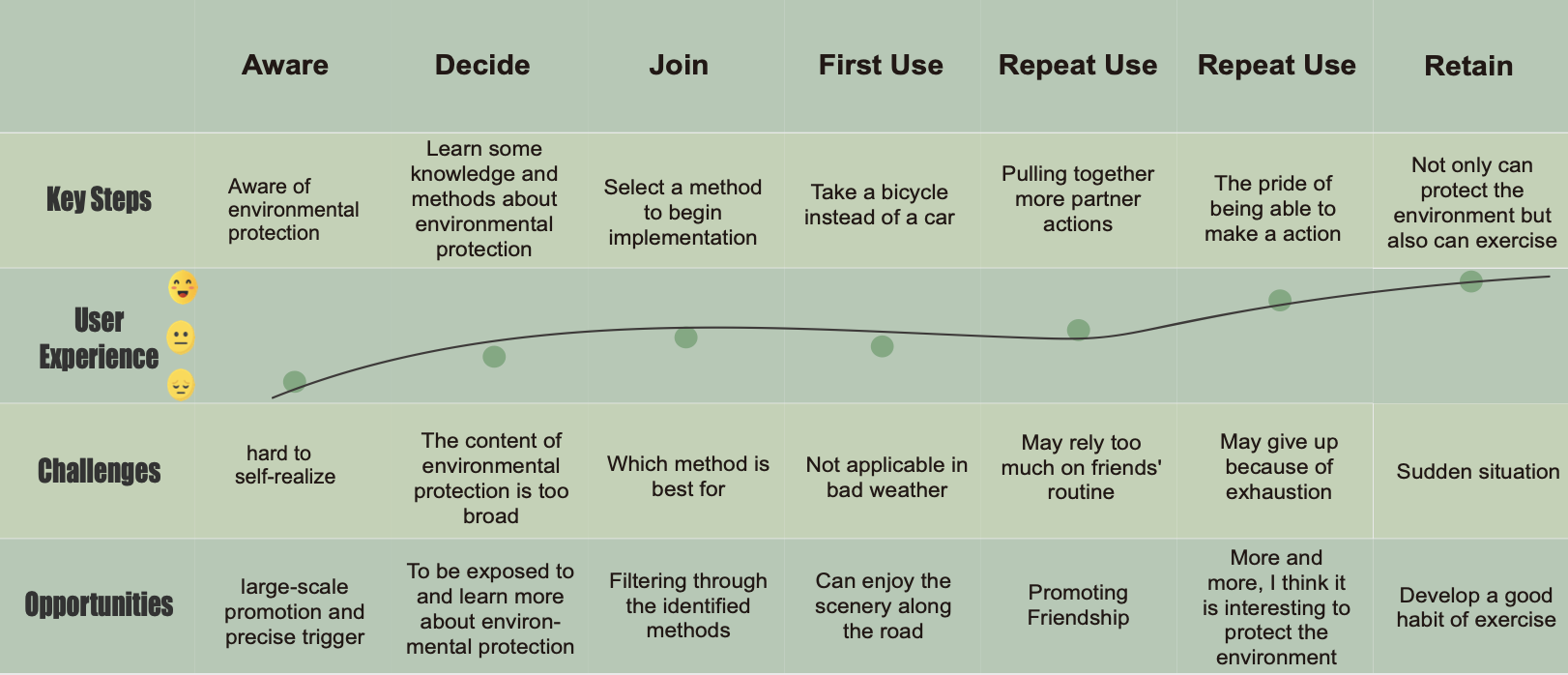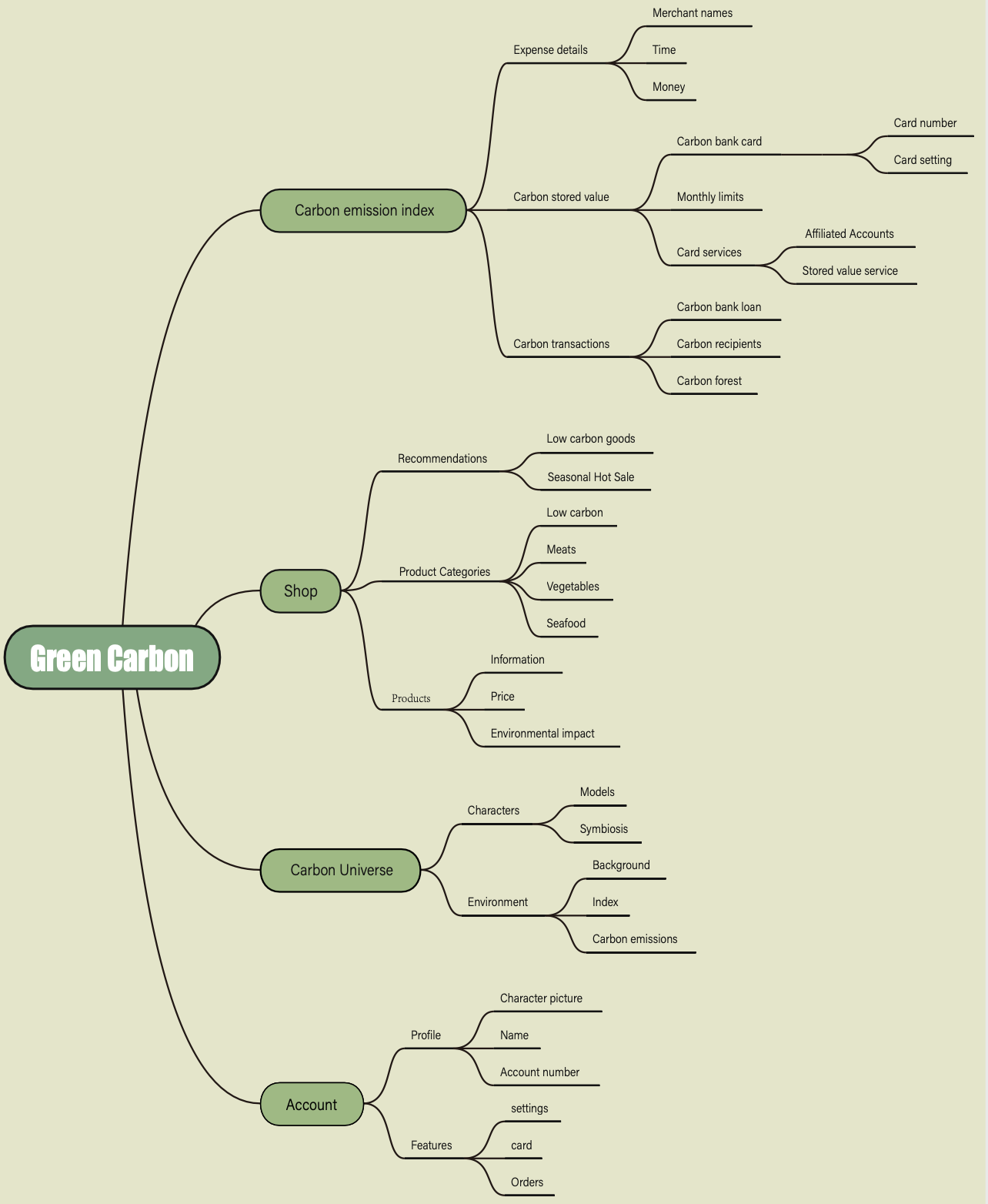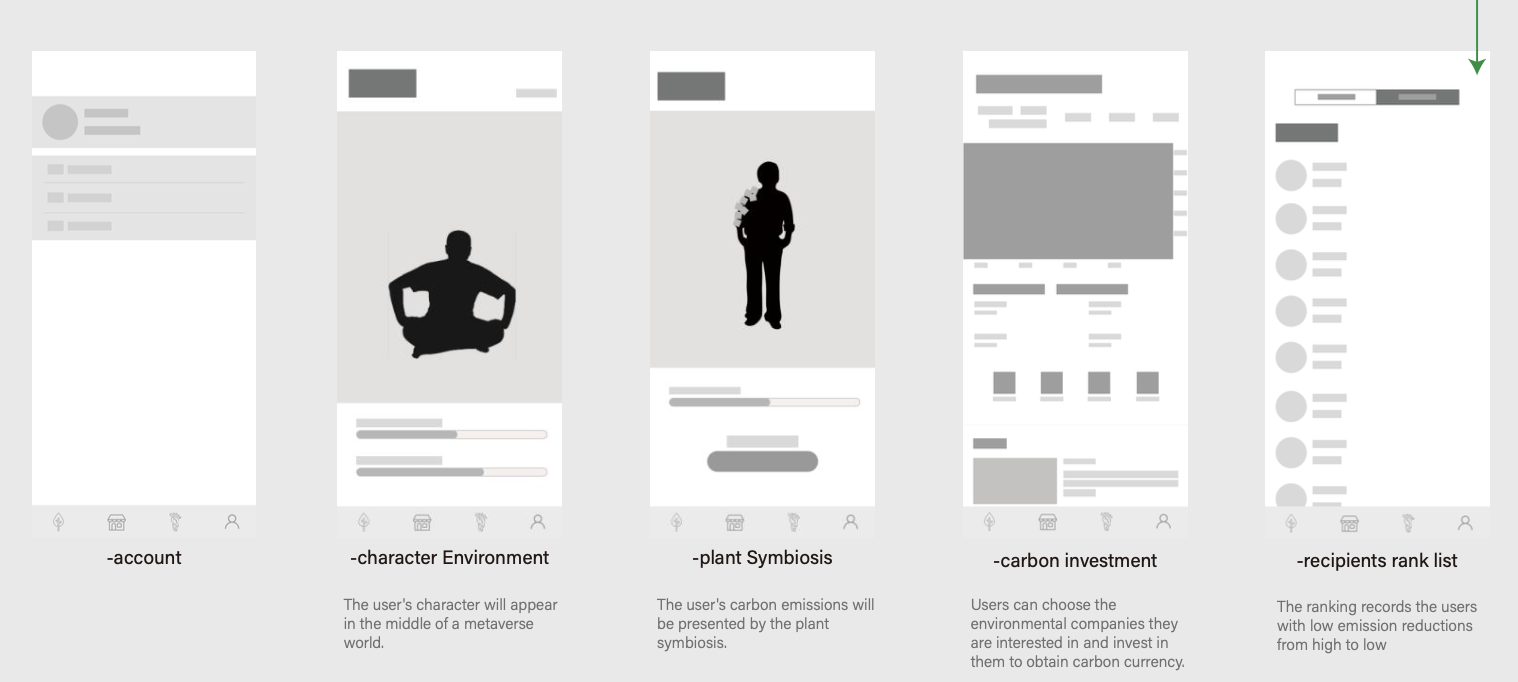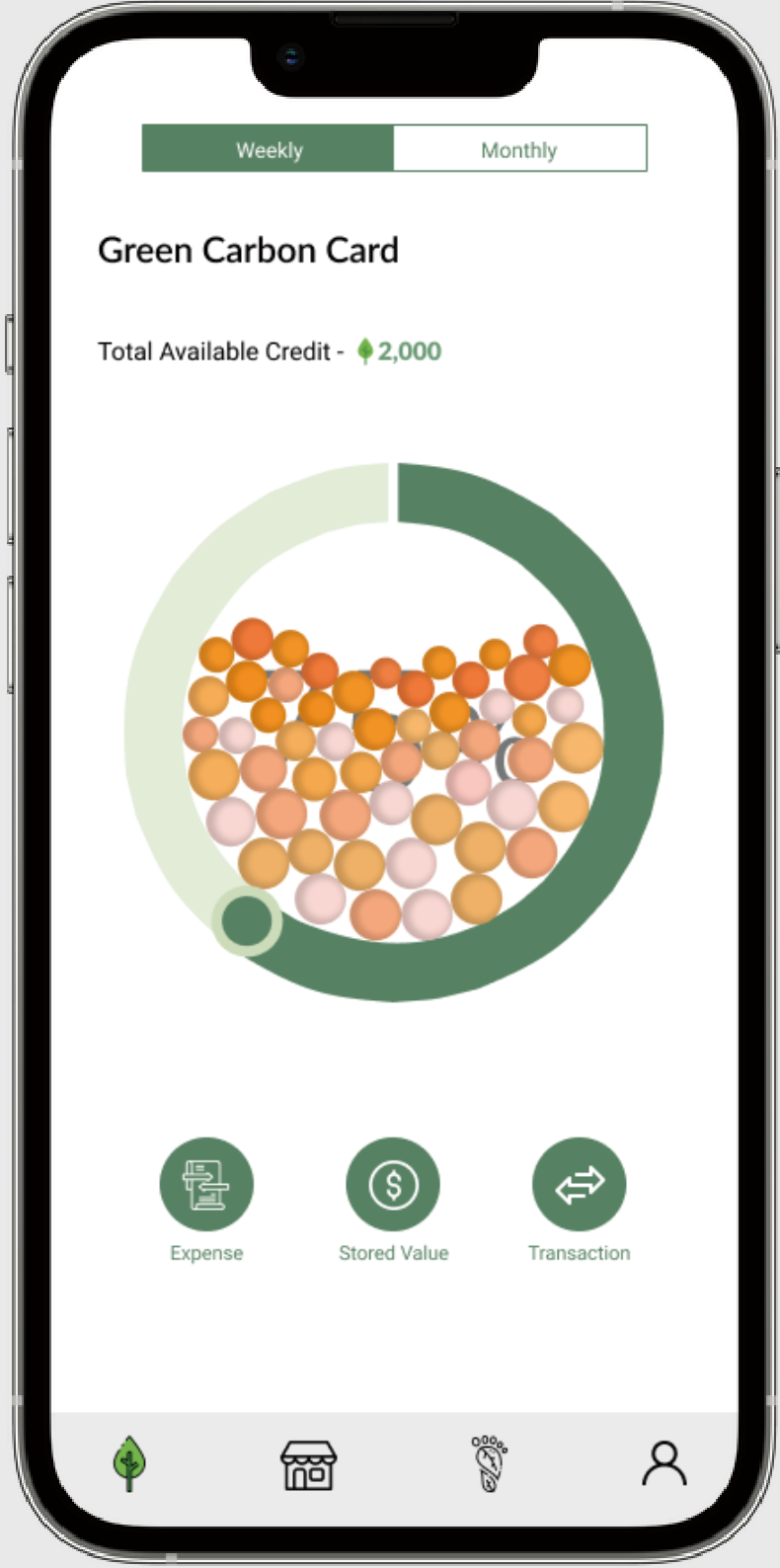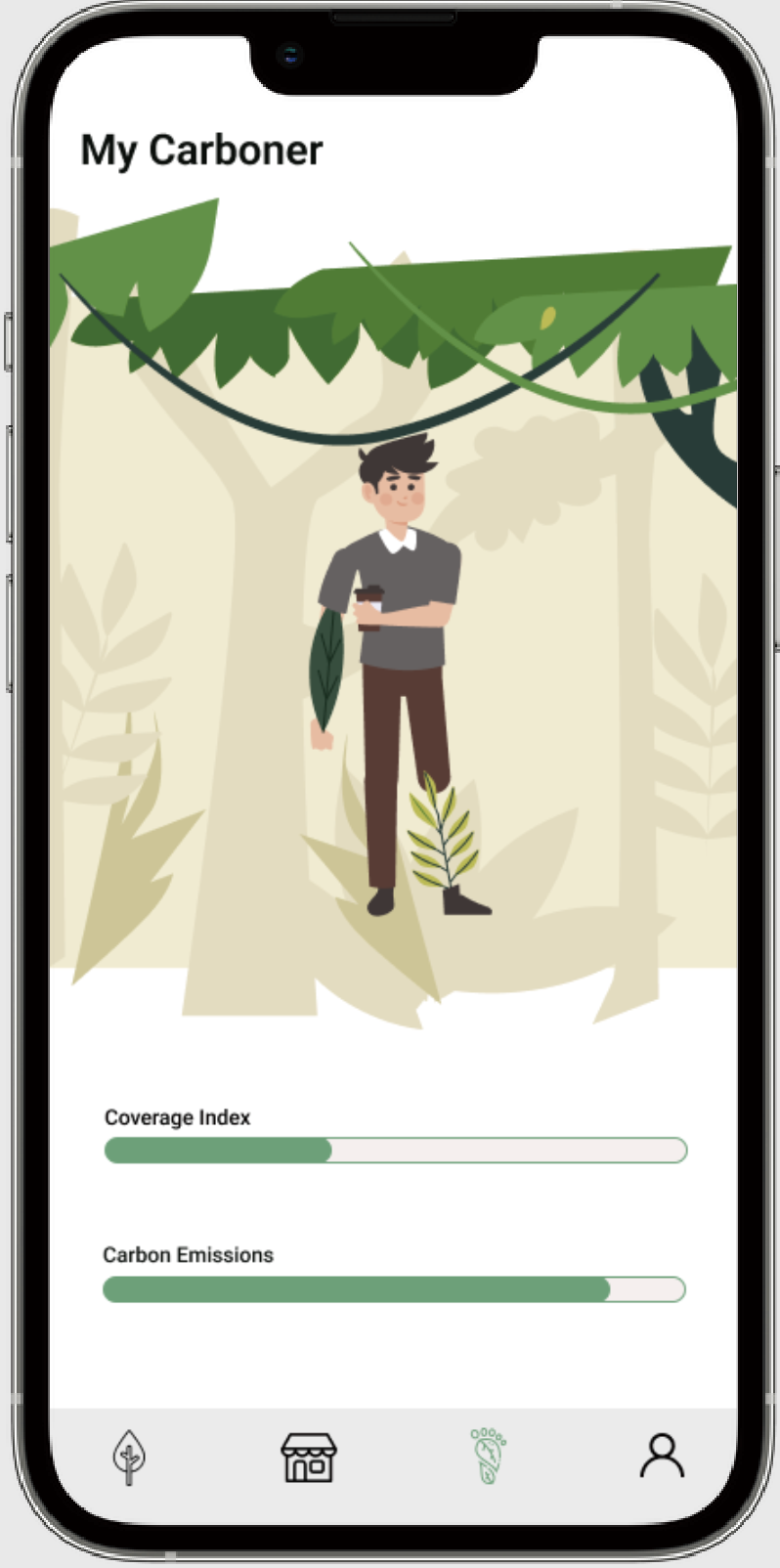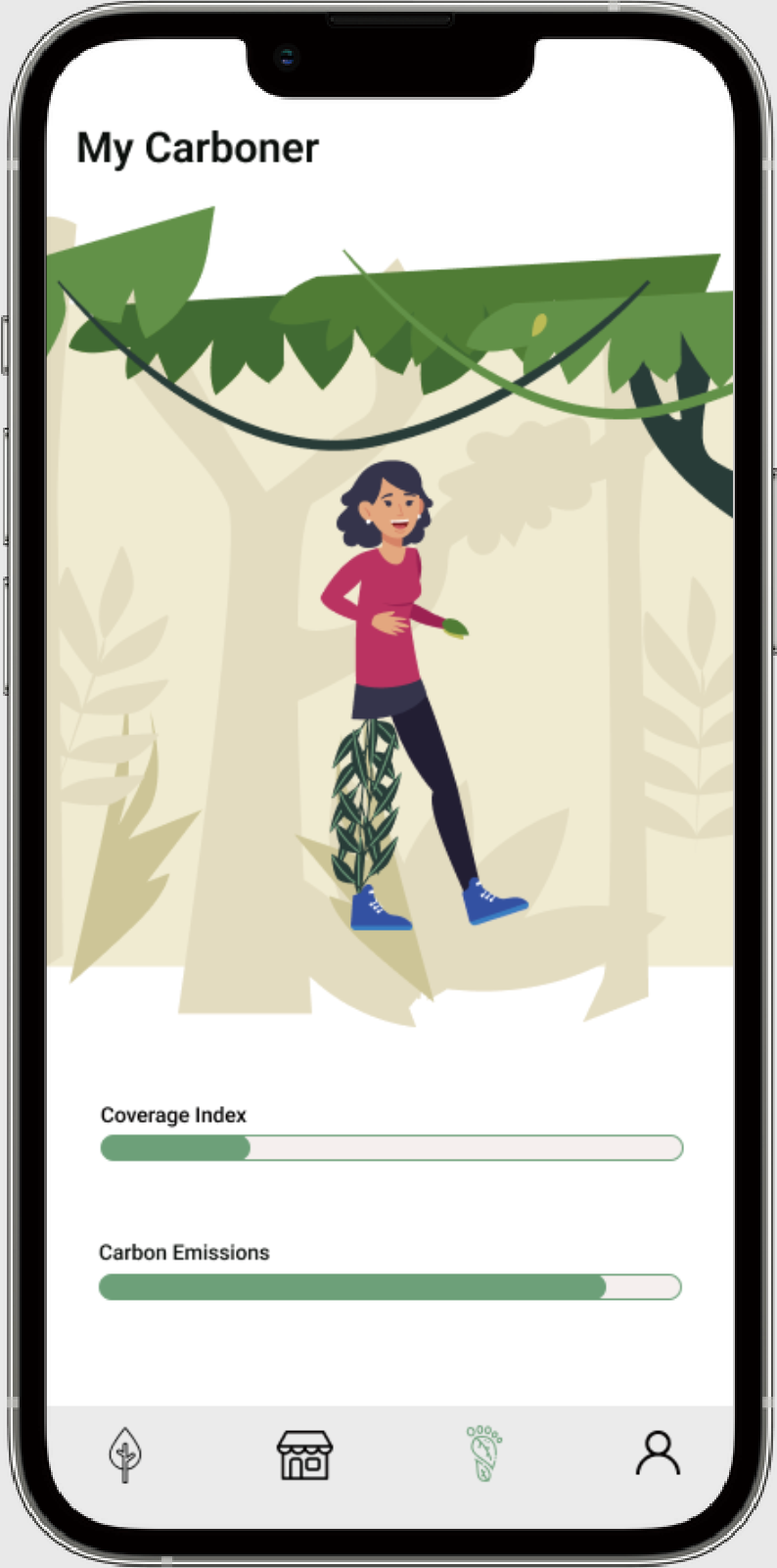
A Carbon-Based Currency for a Sustainable Future
Brief
Climate change is the most pressing issue of our generation, but it often feels far away. Many people are concerned about climate change and are trying to change their behavior. But because environmental systems cannot visualize the results of small behaviors in a timely. Many participants are unable to develop a long-lasting motivation because the environmental system does not respond to small behavioral outcomes in a timely manner.
Background
From the chart we can see that China as a developing country has been increasing its carbon emissions by leaps and bounds every year since 2017 until 2020. Even without the data of the last two years, we can presume that such data is still growing.
2014-2020 China Carbon Emissions Statistics
Who should make the action?
Carbon credits at the disposal of the state
Food & Beverage
How to REDUCE your personal carbon footprint?
Use of energy-saving appliances
Secondary Research
34
Research Summary
Others
Electric vehicles
Querying Data
Carbon credits for basic personal needs
Collect financial consumption data
=
=
Carbon emission rights are financial assets or financial instruments and are a scarce and valuable resource.
From the perspective of property rights, their trading occurs between countries, between countries and companies, and between companies to achieve the task of reducing emissions.
Primary Research
Carbon Footprint Analysis
=
Transportation
Buy goods
Personal Carbon Economy
Carbon credits which market-allocated
It is the collection of greenhouse gas emissions caused by business establishments, activities, products or individuals through transportation, food production and consumption, and various production processes. It describes the impact of one's energy awareness and behavior on the natural world.
The sources of carbon emissions for the average Chinese
Financial institutions
Hoom heating & cooling
Public Energy Vehicles
Account balance
Use of solar power
Water conservation
1. Reduce food waste
2. Drive less and fly less
3. Think twice before spending and shopping
4. Keeping your house warm and using green energy
Recording Data
Eat more vegetables
Using recycled items
Encourage users to practice green and low-carbon living
Assess the carbon reduction behavior of users & form carbon account balances
Motivate users to increase carbon emission reduction behaviors & choose energy-saving products
Respondents’ Occupation
Education Level of the Respondents
Respondents' Awareness & Perception of Environmental Protection
Understanding of Carbon Finance
Understanding of Environmental Protection
Approximately 73% of the 34 people surveyed were students, while 10% of them had a bachelor’s degree or higer.
Even for people with high education, only 20% of them know what a carbon footprint is.
Even if half of the population doesn’t care about the environment, the vast majority of them know what can be done to improve it.
Target Users
Be frugal in life
Young Generation
Like to invest and manage money
Focus on environmental conditions
Buy without considering carbon emissions
Like to play games, interested in meta-universe
People
The carbon footprint is generated through the crowd, which wants to get more information about the carbon footprint through social media.
Government
The government proposed policies to control the amount of carbon footprint, and the crowd needs to comply with the government’s policies.
Academic Community
The academic community needs to study the changes in nature to analyze the carbon foorprint.
How Might We?
Challenges
Carbon Footprint Visualization
Carbon Neutral
Opportunities
Immersive Experience
Mission Statement
Plant Symbiosis & Eliminate Carbon Footprint
Personal Carbon Trading
Carbon Account & Credit Card & Trading
Resource Sharing & Monioring Impact
Social Co-creation
Recording and querying personal carbon reduction data in real time encourages users to practice green and low-carbon living.
Set up a carbon account and record the user's consumption behavior.
The balance of the carbon account is used to motivate users to increase their carbon reduction behavior and to guide them to choose energy-saving products and services.
Persona
Design Concept
User Journey Maps
Information Architecture
User Flow
Final UI Design
Home Page
The progress bar in the middle of the screen shows two different contents, the outer circle shows the user's carbon credit storage status, while the inner blob reflects the status of the user's carbon emissions. If the carbon value is below 60 percent, the ball is green, and if it is above 60 percent, it is orange and red.
Expense
Here, the user is presented with all the money they have spent and earned. It also includes the merchant's name, logo and date of purchase.
Shop
At the store, users can use their carbon stored value cards to purchase a wide range of food. Low-carbon food is bound to become a hot product. In addition to the basic information of the product, there is also information about the carbon emission of the product will be presented.
Expense
Details of all spending by users
Stored Value
User's carbon savings status and credit card information
Transaction
Trading venues for users: bank loans, buddy trading and financial investments
Stored Value
Here shows the status of the user's carbon stored value and also contains the services of the user's bank card.
Buddy Trading & Investment
Friends can transfer carbon credits to each other to store value; users can also earn carbon credits by investing in finance.
Carbonverse
The user's exclusive persona will change through changes in the user's carbon footprint. The combination of plants and characters is called plant symbiosis by the authors, allowing users to have a fun and intuitive look at their carbon footprint.






